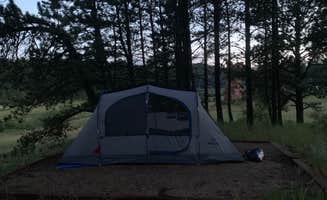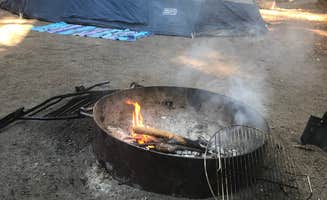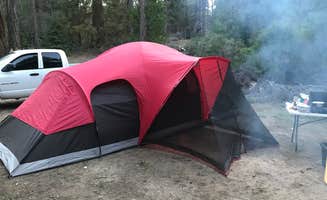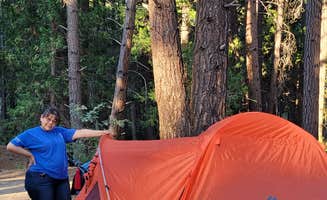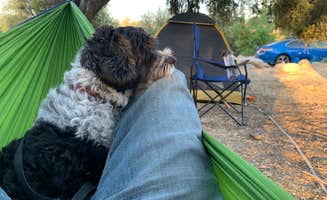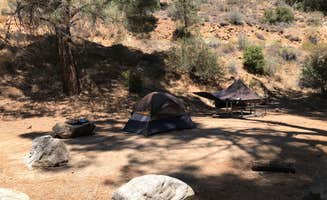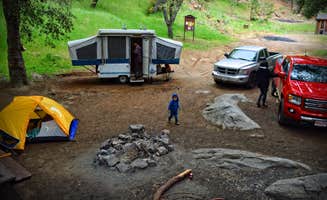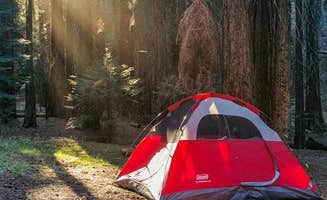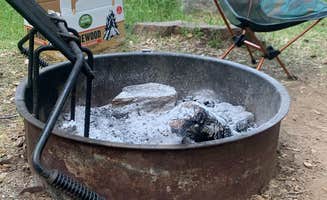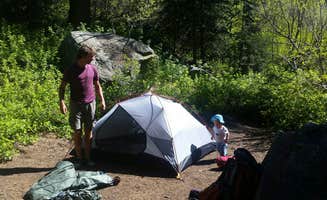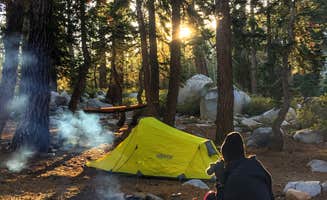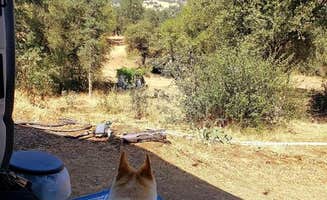Camping areas around Porterville, California range from 4,200 to 7,000 feet elevation in the Sequoia National Forest. The region experiences significant temperature fluctuations with cool nights even during summer months, particularly at higher elevations. Dispersed camping typically requires visitors to bring all necessary supplies including water, while established campgrounds offer varying levels of amenities.
What to do
Fishing in clear waters: The area near Camping area No. 3 offers excellent fishing opportunities in clear creeks. One camper noted, "There is trout in the middle creek and they are a descent size. Great catch to BBQ some fresh trout." Many streams throughout the forest contain catchable trout for those with a valid California fishing license.
Hiking to waterfalls: Several trails lead to water features accessible from forest campgrounds. At Cold Springs Campground, a camper mentioned, "Great access to many different hiking trails of varying difficulty." The 23-mile drive to this campground takes about an hour but rewards visitors with direct trail access without the crowds found at main Sequoia areas.
Swimming in natural pools: Natural swimming holes can be found throughout the region. A visitor at Camping area No. 3 shared, "The water is super clear and nice!" Another camper mentioned that at the same area, "If you walk across you will come across a beautiful waterfall. You can use a donut floaty and slide right down."
What campers like
Secluded campsites: For campers seeking solitude, Dispersed Camp near Sequoia National Park offers isolation. A reviewer wrote, "Stunning. If you want privacy this is it. You are definitely alone," while another noted, "There seemed to be a lot of campsites very far from each other. We only saw one other person."
Wildlife encounters: The forests around Porterville provide opportunities for wildlife observation, though proper precautions are necessary. At Limestone Campground, a camper warned, "Beautiful spot, but Bears visit at night. Keep food packed and ice chests put in vehicle." Morning wildlife viewing is also common, with one camper at Dispersed Camp mentioning, "Woke up to cattle walking through the meadow we parked next to."
Star gazing: The minimal light pollution in these remote areas creates ideal conditions for night sky viewing. A camper at Dispersed Camp shared, "It was absolutely gorgeous and the stars were unreal!" The higher elevation and distance from urban areas contribute to exceptional star visibility.
What you should know
Road conditions: Many forest roads require high-clearance vehicles, particularly after winter or during early spring. A visitor to Moses Gulch reported, "The road is slow going and full of potholes. I turned around after three miles because my old truck was shaking apart." Similarly, another camper noted about Cold Springs access, "It's a long and windy dirt road, with steep drop offs."
Bear safety: Bears are active throughout the region, requiring proper food storage. A camper at Limestone Campground mentioned bears visiting at night, while another at Dispersed Camp advised, "I did have to put my trash in the tree with a rope about 20-50ft away just for safety." Some established campgrounds provide bear boxes, but dispersed campers must bring appropriate food storage containers.
Seasonal considerations: Most campgrounds operate from May through October, with closures during winter months. The water in streams and swimming holes remains very cold even during summer due to snowmelt. A Cold Springs camper noted, "The water is COLD, even in summer."
Tips for camping with families
Choose established campgrounds: For families, campgrounds with basic amenities provide more convenience. At Belknap Campground, a visitor explained, "There are a handful of giant sequoia's in the middle of the campground. We had site 15, and although the picture of the site looks small there is a trail to, an upper spot for putting the tent, which makes the campsite secluded and beautiful!"
Look for swimming opportunities: Natural swimming areas provide family entertainment. One camper at Belknap noted, "Our site was between a creek and the river so we listened to water the whole time. So relaxing! Nice trails to explore. Husband caught a nice trout. There's a decent swimming hole."
Consider weekend crowding: Family-friendly sites fill quickly on weekends and holidays. One reviewer at Peppermint Campground advised, "I highly recommend to go during the weekday for solitude & enjoy the wilderness, weekends gets crowded with family young kids."
Tips from RVers
Size restrictions: Most forest campgrounds have limitations for larger vehicles. At Tulare County Balch Park Campground, RVers will find smaller sites suitable for compact rigs but challenging for larger motorhomes. The access roads to most primitive tent camping locations near Porterville are narrow with tight turns.
Dispersed options with vehicle access: Some dispersed areas accommodate smaller RVs despite rough access roads. A camper at Dispersed Camp mentioned, "Nice quiet boondocking area downhill off the road. It's all dust roads so AWD would be best, but we did make it in our van."
Water and waste management: No hookups exist at these campgrounds, requiring self-contained systems. RVers must bring adequate water supplies and have capacity to pack out all waste, as most areas lack dumping facilities.


